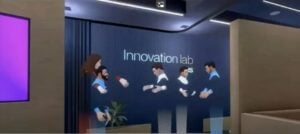Future Proof Your Human Talent
With the focus so much on artificial intelligence and the movement towards digital technology, it can be easy to forget the human element involved. But for the innovation jobs of the future, we will still need human supervision, human training and education and human development to create the best teams for the initiatives at hand.
In the Harvard Business Review article, “5 Ways to Develop Talent for an Unpredictable Future,” Tomas Chamorro-Premuzic, Chief Innovation Officer at ManpowerGroup, looks at some ways people will be better equipped to handle tomorrow’s jobs. Intelligent, resilient, driven, and curious people will always make up the ranks of the innovation teams of the future but perhaps roles will be broader and not as specialized. Chamorro-Premuzic also makes the case that organizations need to expand people’s talents and be better equipped to learn new skills. “What we need is not just re-skilling or up-skilling, but pre-skilling: that is, being able to future-proof talent and reinvent peoples’ careers before we even know what tomorrow’s jobs and in-demand skills will be,” he says. Some of Chamorro-Premuzic’s recommendations include:
- Focus on potential: As the lifespan of current skills, expertise, and performance shrinks, it is advisable to hire and promote people for what they could do, rather than what they have done in the past. This means prioritizing soft skills — such as learning ability, curiosity, resilience, and adaptability — over hard skills — such as programming or data mining — focusing on the foundational ingredients of employability.
- Provide crucial feedback: Sharing data-driven feedback (from assessments, internal data, and peer-ratings) and helping people understand how their interests and skills can be a future asset to your organization is key. This means thinking of leaders as coaches or talent agents, where their main job is to proactively nurture people’s talents, as well as harness their full potential.
- Focus on talent expansion: Rather than betting on specialists or forcing people into specific niches, focus on broadening or expanding people’s talents. This means not playing to people’s strengths, but rather, helping them develop new strengths, so they become a more versatile version of themselves.
- Invest in mid-level managers: Managers hold the key to unlocking human potential at work, especially when the challenge is to revitalize, reenergize, and reimagine talent. There has never been a better time to invest in mid-level managers, especially harnessing the critical soft skills that will likely future-proof them by enabling them to keep up with technological advancements and drive the value realization their organizations expect from new innovations.
- Invest in leadership skills: If you are worried about an AI-fueled future but still think humans will be part of the picture, then you should be worried about pre-skilling your leaders, for they will (still) be tasked with setting and selling the company’s strategy, and driving the evolution of its culture, in tomorrow’s uncertain time. Importantly, investing in leadership means harnessing the skills that enable people to collaborate effectively and become a high-performing team.
Innovation Teams of the Future
In All Things Innovation’s “Putting Together Your Innovation Team,” we looked at how innovation teams are not working in a bubble, or at least not as much as they used to. Are the days of working in a “silo” gone forever? Moving forward for agile organizations there is a much greater emphasis on cross-collaboration with other teams and departments in the company. From marketing and finance, to research and insights, to technology and IT services, innovation teams are expected to integrate, co-create and align with the business and its strategies on a broader level.
The approach to innovation talent has evolved in this new globalized work world. While common themes have emerged, different organizations have chosen distinct paths. In this recent Innovation Talent Roundtable, the innovation community shared several thoughts on the search for innovation talent and fostering a culture of innovation.
How to Manage Your Innovation Talent Pipeline
Managing innovation talent effectively is crucial for organizations to stay competitive in a rapidly changing business landscape. We asked ChatGPT for some next steps organizations can take to manage innovation talent in the future:
- Establish a Culture of Innovation: Foster a culture that values and encourages innovation. Create an environment where employees feel empowered to share ideas, take calculated risks, and contribute to the innovation process.
- Leadership Commitment: Ensure leadership is committed to and actively supports innovation initiatives. Leaders should communicate the importance of innovation, allocate resources, and lead by example in embracing new ideas.
- Define Clear Innovation Objectives: Clearly articulate innovation goals and objectives aligned with the overall business strategy. This provides a roadmap for innovation efforts and helps employees understand how they contribute to organizational success.
- Encourage Cross-Functional Collaboration: Promote collaboration across departments and disciplines. Cross-functional teams bring diverse perspectives and expertise, fostering a more holistic approach to innovation.
- Invest in Continuous Learning: Provide opportunities for ongoing learning and development. Offer training programs, workshops, and resources to help employees acquire new skills and stay updated on emerging trends in their field.
- Recognize and Reward Innovation: Implement recognition and reward systems that celebrate and acknowledge innovative contributions. This could include monetary rewards, public recognition, or opportunities for career advancement.
- Facilitate Open Communication: Create channels for open and transparent communication. Encourage employees to share their ideas, provide feedback, and engage in open discussions about innovation challenges and opportunities.
- Support Intrapreneurship: Foster an environment that supports intrapreneurship—encouraging employees to act as entrepreneurs within the organization. Provide resources and autonomy for employees to develop and implement innovative projects.
- Promote Diversity and Inclusion: Embrace diversity and inclusion initiatives. A diverse workforce brings a variety of perspectives, which can lead to more innovative solutions. Foster an inclusive environment where all voices are heard and valued.
- Implement Agile Work Practices: Adopt agile methodologies to enhance flexibility and responsiveness. Agile practices can help teams adapt to changing circumstances, iterate quickly, and deliver innovative solutions in a dynamic business environment.
Other important steps include providing access to innovation tools; building a talent pipeline by identifying high-potential employees and providing them with growth opportunities; measuring and evaluating performance; and staying connected to external ecosystems.
Cultivate an Innovation Talent Culture
By taking these steps, organizations can cultivate a dynamic and supportive environment for innovation talent, ensuring that they are well-positioned to navigate the challenges and opportunities of the future. Times are always changing, whether it be technological or otherwise, and humans must be driven by the need to learn and adapt.
As Chamorro-Premuzic notes, “to ensure that those changes are actually an evolution (i.e., contributing to progress), we must make every possible effort to enable humans to develop and deploy the relevant talents to reap the potential benefits of technology.”
Video courtesy of AIHR (Academy to Innovate HR)
Contributor
-

Matthew Kramer is the Digital Editor for All Things Insights & All Things Innovation. He has over 20 years of experience working in publishing and media companies, on a variety of business-to-business publications, websites and trade shows.
View all posts


































































































































































































